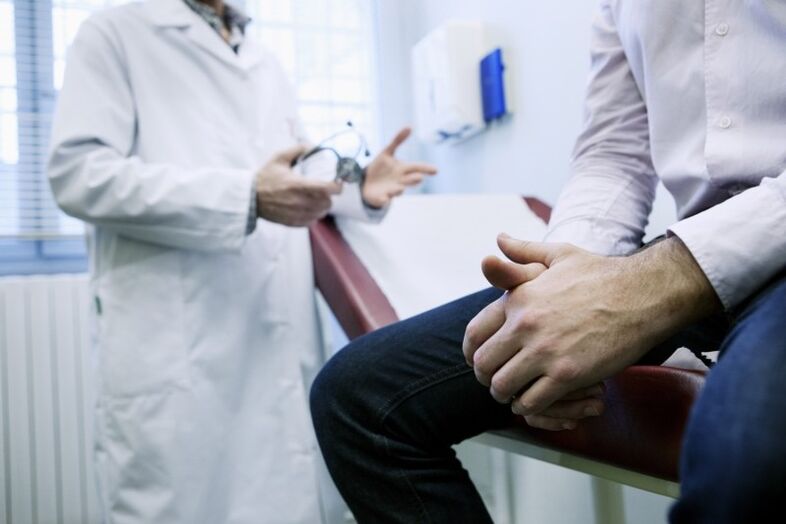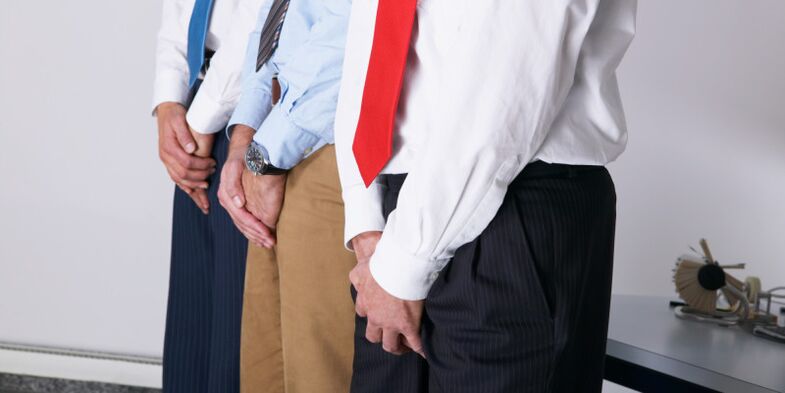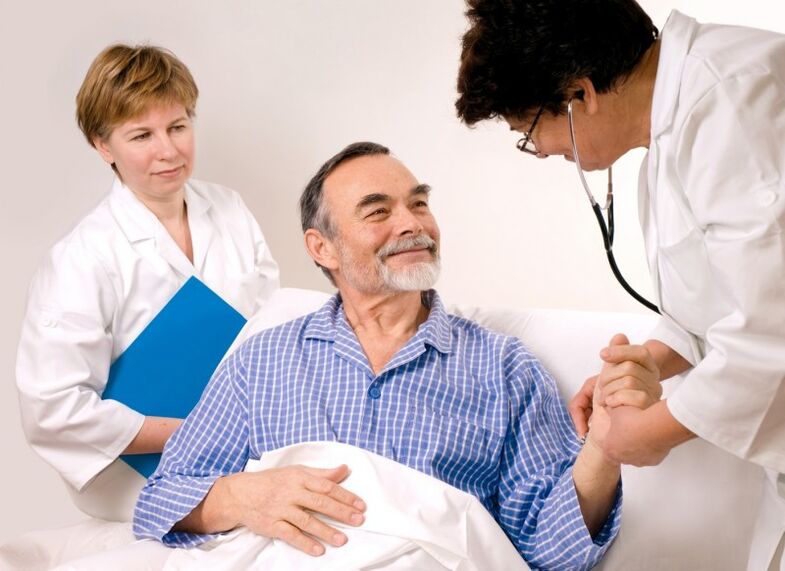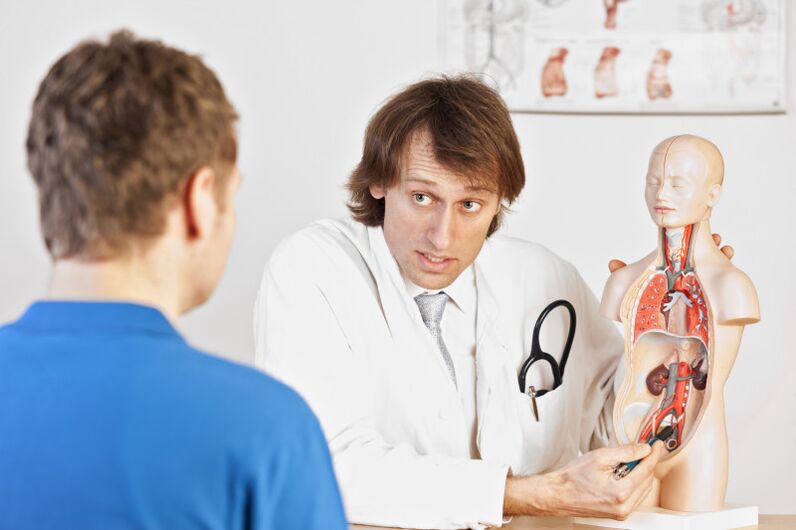
Prostatitis is a dreaded disease of the male genital area that usually affects young men under the age of forty. While its symptoms—decreased libido, difficulty urinating, groin pain—are very distressing, men are in no hurry to seek medical help.
The reason for this is that there is not enough information about the disease and too much myth and prejudice about it.
However, the manifestations of prostatitis only worsen over time, so at the first signs of prostatitis it is necessary to urgently contact a qualified urologist.
Causes of Prostatitis
Prostatitis is inflammation of the prostate gland. Doctors classify the acute and chronic phases of the disease. If the first is left untreated, the inflammation can quickly become chronic and fraught with many complications, such as impaired sexual function and even progression to prostate cancer.
What is the reason for its occurrence?
Here are just a few of them:
- STDs. Often, men are carriers of a particular infection without even knowing it because the disease is completely asymptomatic. However, this photo is very misleading. Once the immune system fails, for example, under the influence of stressful situations, this promotes the development of prostatitis. The most common pathogens of the disease are herpes virus, Candida fungus, Escherichia coli and so on.
- Untreated bladder infection. In this case, the infection can easily spread to the nearby prostate.
- Blood stasis in the pelvic area. This can lead to a sedentary lifestyle and irregular sex. In this case, there is a so-called nonbacterial prostatitis.
- Periodic hypothermia, stress, the presence of foci of infection in the body, including dental caries.
- Prostatitis can be a complication after serious infectious diseases (flu, tonsillitis, etc. ).
Main symptoms of prostatitis
The most common signs of the disease, regardless of the cause, include:
- reduced potency;
- pain and difficulty urinating;
- Pain of varying degrees in the groin and genital area.
Symptoms of acute bacterial prostatitis
As mentioned above, the first stage of bacterial prostatitis is acute, lasting no more than 3-5 days, and then slowly becomes chronic.
It is very important not to miss the first symptoms of the disease:
- groin and scrotal pain;
- severe pain when urinating;
- glans pain after sexual intercourse;
- Erections worsen and intercourse shortened.

A few days after the initial symptoms appear, the pain subsides, and men develop the deceptive impression that the threat has passed. However, this only means that prostatitis is slowly but surely becoming chronic.
This course is characterized by:
- alternating periods of remission and exacerbation of prostatitis;
- Difficulty urinating, frequent urges, and a feeling of incomplete emptying of the bladder are among the signs of the aforementioned disorders.
During exacerbations of chronic bacterial prostatitis, patients suffer from the same symptoms as in the acute form.
Even seemingly innocuous factors can trigger it:
- low temperature;
- cold;
- Unconscious erections;
- vitamin deficiency;
- stress and overwork;
- a sedentary lifestyle;
- constipate;
- irregular sex life;
- Abuse of smoking and alcohol.
Symptoms of nonbacterial prostatitis
This disease is also called congestive prostatitis. This is the most dangerous and common type of pathology. Its development is directly related to the way of life of modern people.
Medical researchers compare the severity and prevalence of chronic congestive prostatitis to dangerous diseases such as tuberculosis or cancer, because its neglected form is the direct route to prostate cancer.
This form of disease can be discussed when inflammation of the prostate is not caused by any microbe, but by other factors - chronic lack of sexual intercourse, sedentary lifestyle, often stressful situations.
Such a conclusion can be drawn from the results of bacteriological studies, which show the absence of pathogenic microorganisms.
The symptoms of this disease are somewhat different from bacteria:
- Patients complain of periodic or persistent dull pain in the pelvis, lower abdomen, groin, and genitals;
- Sexual dysfunction and urination problems;
- mental state of depressed patients
Symptoms of chronic asymptomatic prostatitis

This is an underlying form of the disease. As the name suggests, it is asymptomatic, that is, there is an inflammatory process in the prostate, but this does not affect the patient's condition.
Some medical researchers tend to view this form of pathology only as a normal age-related change in the prostate, which occurs due to impaired blood supply to the organ.
The disease is often discovered incidentally in patients, for example, during abdominal surgery associated with a completely different diagnosis.
To avoid prostatitis, you need to understand its causes.
Therefore, the main measures to prevent prostate inflammation:
- Although the primary measures to prevent prostatitis include regular sexual activity, as mentioned earlier, it is still worth avoiding casual sexual contact or having to use barrier contraceptives. This measure is mandatory because about 30% of cases of prostate inflammation are related to sexually transmitted diseases.gender selection- Masturbation is also popular with urologists as it improves blood supply to the prostate as much as mature intercourse.
- Physical activity, active lifestyle. Physical education and exercise are useful as general strengthening measures, but attention should be paid to exercise that improves blood circulation in the pelvic region. This includes running, skating, skiing, and more.
- Regular preventive check-ups by a urologist or andrologist, at least once a year.
- Prompt treatment of foci of infection in the body, such as oral hygiene.
The diagnosis of prostatitis is complex and multifaceted

The diagnosis of prostatitis is mainly related to the determination of the etiology of the disease, which includes the following steps:
- Very important for clarifying the picture of the disease is the investigation of the patient, who must describe his complaints in detail - the localization of certain sensations, their duration, to which events the manifestations are related, and then they begin. Additionally, at appointments, physicians scrutinize patients' medical records for previously transferred diseases, tests, and examinations. Urologists clarify patient information about sex life, the presence of sexually transmitted diseases.
- Check urethral smears and scrapes. An increase in the number of leukocytes in the smear and the presence of a pathological microbiota in the scraping will indicate the presence of infection.
- General urinalysis. Helps to identify the presence of infection, which is manifested by an increase in the number of white blood cells (more than 5).
- Ejaculation analysis. performed to confirm the diagnosis of nonbacterial prostatitis.
- Prostate ultrasound. Allows you to see the picture of the disease in the most complete way. It is performed to clarify the diagnosis of acute and chronic inflammation of the prostate, suspected cancer.
Pain and decreased potency - as the first sign of prostatitis
Most of the time, doctors have to deal with an already advanced disease, because most men either tend to ignore the first alarming bell - groin pain and decreased libido, or the disease itself has no symptoms for some time.
These are characteristic of male anatomy - in the prostate area, blood circulation is difficult, it is a "nutrient medium" for the reproduction of pathogenic microorganisms, and a sedentary lifestyle significantly exacerbates this problem. Thus, it becomes apparent why prostatitis is spreading in large numbers among truck drivers and commuters.
Regardless, as many as 50% of men worldwide experience some symptoms of prostatitis. Therefore, it is important to be aware of the first signs of illness and to seek medical help promptly. After all, treating advanced forms of the disease is an expensive and lengthy endeavor.
Treatment that restores a patient to a full life

Of course, getting rid of prostatitis early is much easier than getting rid of the neglected disease. However, it is the chronic form that doctors most often have to deal with, and often requires long-term and complex treatment.
But anyway, first you need to identify the root cause of the pathology - blood stagnation and/or inflammation of the prostate.
Therefore, complex treatment of prostatitis includes:
- The inflammatory process is treated with broad-spectrum antibiotics. In addition, these drugs are prescribed in the form of tablets and rectal suppositories. In the complex, infusion of herbs (chamomile, calendula) in the form of micro-enemas is very helpful.
- However, the treatment of prostatitis should not be limited to taking medicine, but should aim to restore blood circulation in the prostate area, which involves a set of physical therapy and therapeutic exercises. These measures help better absorption of antimicrobials because they improve blood supply to the prostate. Doctors often prescribe for prostatitis: electrophoresis, laser therapy, magnetic therapy;
- Prostate massage. The procedure is useful and effective, but should not be performed at home without consulting a doctor, as it has many contraindications, including the acute phase of the disease.
To sum up, it can be said that the treatment and prevention of prostatitis largely depends on the desires and activities of men themselves. Basic morning exercises, regular preventive check-ups with a urologist, a balanced diet - this is the key to male strength and longevity!



























